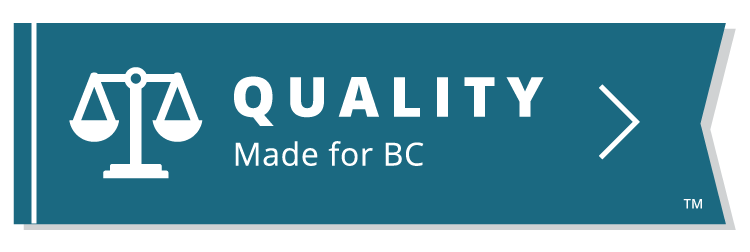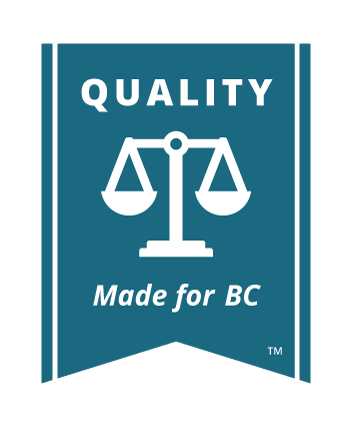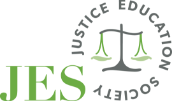Examinations for Discovery
An examination for discovery is an oral examination under oath. It is another tool you can use along with document discovery to learn about the other side’s version of the facts. Rule 7-2 sets out the procedure for examinations for discovery.

Read the Rules
Rule 7-2 Examinations for Discovery
An examination for discovery involves a meeting where one party asks an opposing party questions about the issues in the dispute. For example, in a case arising from a motor vehicle accident, the driver of one car may want to ask the other party questions about how fast they were driving, whether they wear glasses, the injuries suffered as a result of the accident, etc.
Examinations for discovery are part of the litigation process, but they do not take place in open court, and no judges or court officials are present. The examination takes place in the presence of a court reporter that records each question and its answer, and then provides a transcript (a written record) of the examination. The party answering questions must take an oath or give a solemn affirmation that they will tell the truth. The transcript of the examination for discovery, or portions of it, may be used at trial.
Unless the court orders, or the parties agree, examinations for discovery are limited to 7 hours per party conducting the examination. So, for example, if there is 1 plaintiff and 2 defendants, each defendant may examine the plaintiff for up to 7 hours, resulting in the plaintiff being subjected to up to 14 hours of discovery.

Learn More
For fast track litigation under Rule 15-1, examinations for discovery are limited to a total of 2 hours by all parties conducting the examination. (See Rule 15-1(11)). So, in a fast track case, if there is one plaintiff, they may only be subjected to a total of up to 2 hours of discovery, regardless of the number of defendants. For more information see Fast Track Litigation.
These two processes – examinations for discovery and document discovery – are very important to preparing your case. They go hand in hand. Once you have documents, you can review them and determine which questions still need to be answered by the other party at an examination for discovery. And, when you have finished an examination for discovery, you might want to request further documents
Do You Have to Pay Anyone?
When you examine a person for discovery, you are required to pay them a witness fee. Make sure that you know how much it will cost you to examine the witness before you go ahead with the discovery. If the witness lives out of town, you will have to pay for their travel expenses, a per diem (per day) rate for meals, and a hotel if they have to stay overnight. Ask a lawyer for advice about this if you are concerned about the cost of examining your witness.

Learn More
Schedule 3 of Appendix C to the Rules of Court sets out the fees payable to witnesses
Arranging the Examinations for Discovery
You arrange an examination for discovery using an Appointment to Examine for Discovery (Form 23). There are several things to consider when booking an examination for discovery.

Find the Form
Form 23 Appointment to Examine for Discovery
Who to Examine
If there is a single plaintiff or defendant, that is who you will want to examine.
If the defendant or plaintiff is a company, you want to examine the person who knows the most about the matters in question. Under Rule 7-2(5), the corporation must, if asked, nominate someone to be examined who is knowledgeable about the issues. However, you do not have to pick to examine that person. Rather, you can examine anyone who is or has been a director, officer, employee, agent or external auditor of the corporation.
It is important however that you do not choose someone who would have no idea about the facts of the case. If you pick the Chief Executive Officer and they do not know anything about the dispute, you will not have a productive examination. You want to speak to someone knowledgeable.
If the defendant or plaintiff is the government, then they will choose who you examine. If you find that this person is not knowledgeable, you can later bring an application to the Court to seek additional time to examine someone else.
Serving Appointment to Examine for Discovery
You must serve Form 23 at least 7 days before the date selected for the examination. It makes good sense to wait until all the pleadings have been filed by both parties before scheduling an examination for discovery. That way you will know exactly which issues are in dispute.
Preparing to Examine
It is a good idea to prepare a script of the questions you wish to ask so you do not forget to ask any important questions. You normally have only one opportunity to conduct an examination for discovery so you need to make it count. Unlike court, you cannot go watch examinations for discovery in preparation for yours. In thinking about an examination for discovery, you need to consider:
- When do you want to examine this person? You need to make sure that you are available, that the person you want to examine is available (and their lawyer, if they have one)
- What do you want to ask? You might want to get advice from a lawyer to make sure you are asking questions of the other party that are both appropriate and admissible in court if the case proceeds to trial. See Get Help
- What documents do you want to use in your discovery? You can bring listed documents (either yours or theirs) to the discovery and ask questions about these documents
- What court reporter will you use? There are many court reporters and most of them will provide a boardroom that you can use for your discovery. Make sure you book the court reporter as early as possible. You can find court reporting services listed in your telephone directory or online
What Questions Can You Ask?
Questions on examinations for discovery can be quite broad and can be asked about anything that is related to your case. In some cases, the person being examined cannot answer a question right away and you might need to ask them to find out the answer after the examination and send it to you by letter. Typically, all discoveries begin with asking the person being examined to state their name, address, and occupation.
The person being examined for discovery must answer any question within his or her knowledge (or that is possible for them to find out), regarding any matter that is not privileged, relating to any matter in question in the action. You can also ask the person being examined the names and addresses of other people who might have information relevant to the proceeding.
The party being examined may refuse to answer a question. These are called objections. If the party asking the question does not believe that an objection is appropriate, they may schedule a chambers application after the examination to ask a judge to direct the person to answer the question. For more information on bringing an application see Chambers Applications.
The evidence from an examination for discovery can be used at trial by the other side. It can be “read in” to the record if the person discovered made admissions. Further, it can be used to challenge credibility if different answers are made at discovery and on the stand. For more information on the use of an examination for discovery transcript, see Evidence.
Getting a Transcript of the Examination for Discovery
If you wish for a transcript of the discovery you may order it from the court reporter. Once you have paid the required fee for the copies they will provide you with an original transcript and as many copies (both electronic and paper) as you have ordered. If you decide to use all or any part of this transcript at trial, you will need to provide the Court with the original, so you will want to put this away in a safe place and use a copy.
Transcripts are set out in a question and answer format, with each question and answer being numbered in chronological order. The transcripts also set out any questions that have been left outstanding (the undertakings). These questions are those where the person had to find out information or needed to look at documents to find out the answer. You will want to keep track of these questions and make sure they are answered later. This is true whether you are the person being examined or the person doing the discovery.







 JusticeEducation.ca
JusticeEducation.ca JusticeEd
JusticeEd /JusticeEducation
/JusticeEducation